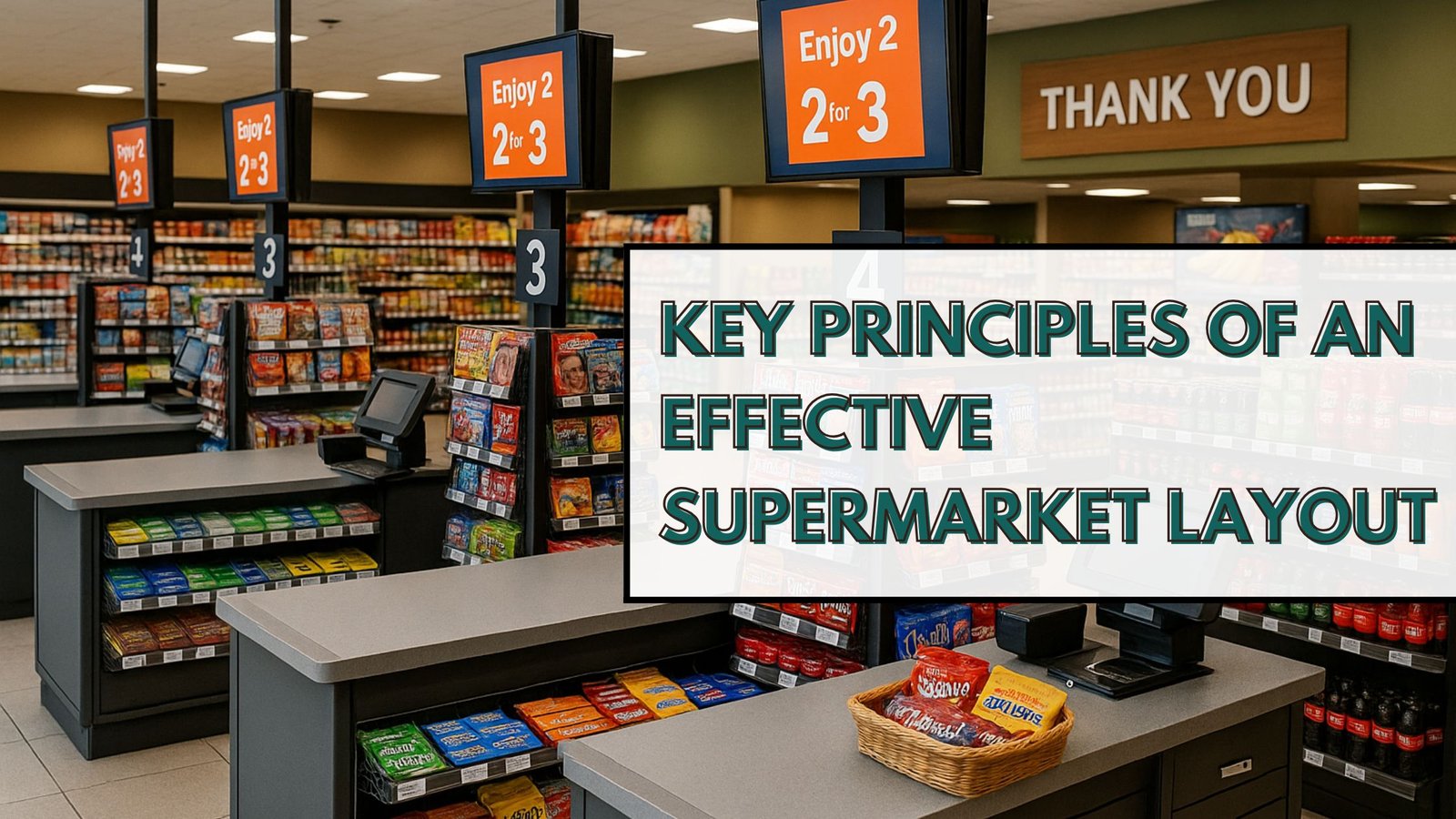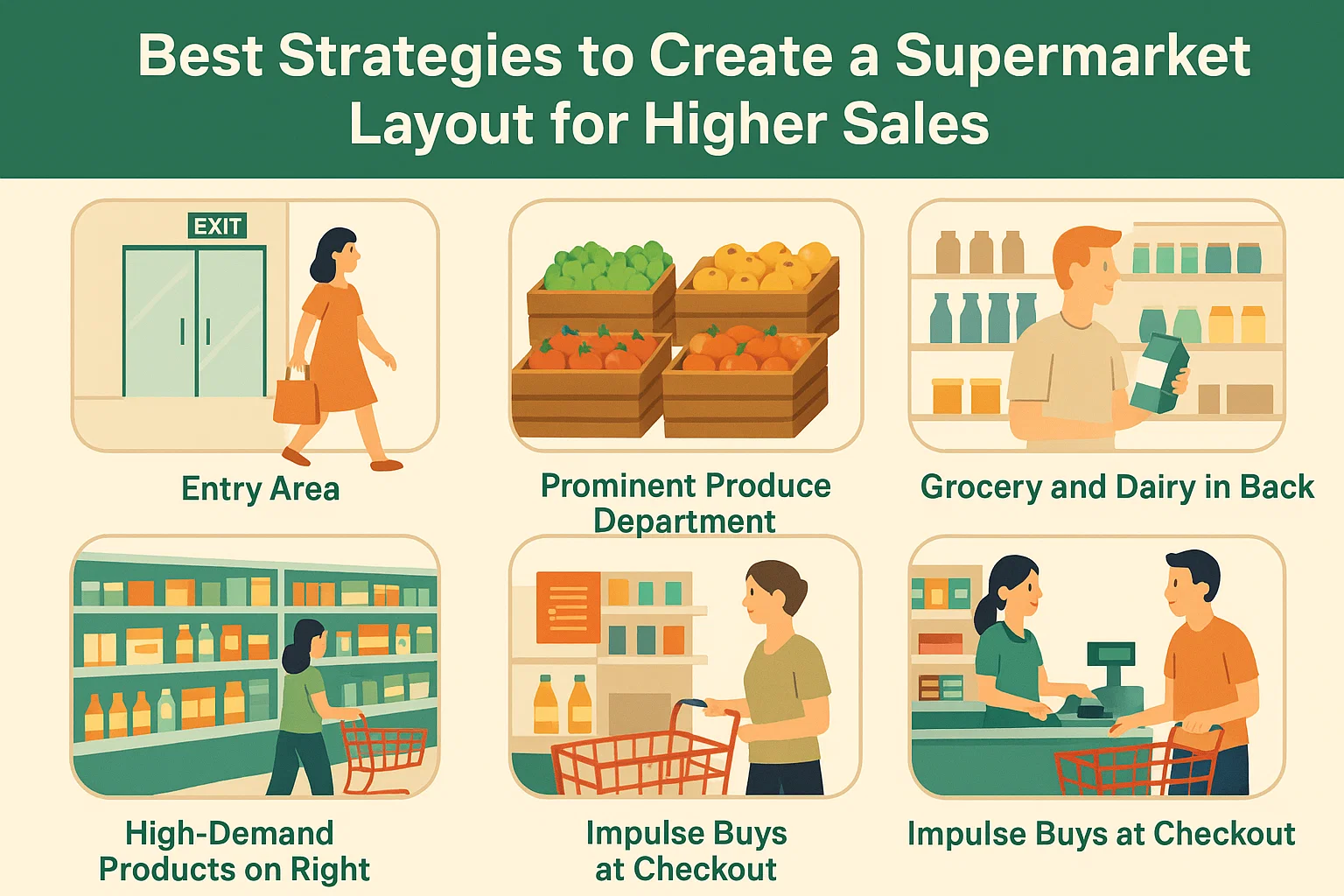Introduction to Supermarket Layout Design
The design of a supermarket layout isn’t just about arranging shelves and products — it’s a science that combines psychology, marketing, and operational efficiency. The best strategies to create a supermarket layout for higher sales ensure customers stay longer, see more, and spend more.
In this article, we’ll explore actionable techniques backed by research and real-world success stories, helping you design or revamp your supermarket to boost profits and customer satisfaction.
Why Supermarket Layout Matters for Sales
A well-thought-out supermarket layout guides customers seamlessly while subtly encouraging impulse purchases and higher spending.
Impact of Customer Psychology
Humans are creatures of habit. Supermarket layouts that cater to subconscious shopping behaviors — like placing essentials at the back to expose customers to more products — can dramatically increase sales.
Case Studies of Successful Supermarket Layouts
Major chains like Tesco and Walmart consistently test and optimize layouts. Tesco, for example, increased bakery sales by moving ovens closer to the entrance to release the aroma of fresh bread.
Key Principles of an Effective Supermarket Layout
Understanding Customer Flow
Customers usually turn right upon entering and navigate counterclockwise. Designing aisles and displays to complement this natural flow keeps traffic moving and reduces congestion.
Maximizing Product Visibility
High-profit and impulse-buy products should be placed at eye level. End caps (the ends of aisles) are prime real estate for promotions.
Enhancing Shopping Comfort
Wide aisles, proper lighting, and clear signage make the experience pleasant, encouraging shoppers to linger and buy more.
Best Strategies to Create a Supermarket Layout for Higher Sales
Here are the most effective strategies you can implement right now:
Designing the Entrance Area to Attract Shoppers
The entrance sets the tone. Fresh flowers, produce, or baked goods create a welcoming, sensory-rich first impression.
Creating a Natural Pathway through the Store
Use floor patterns, lighting, and displays to subtly direct customers through the store without confusion.
Strategic Placement of High-Margin Products
Place premium products in high-traffic areas and essentials further back, ensuring customers walk past other tempting items.
Optimizing Checkout Zones
Checkout areas are perfect for small, impulse-buy items like candy, magazines, or batteries. Ensure queues are managed well to avoid frustration.
Advanced Techniques for Boosting Sales through Layout
Using Colour and Lighting Effectively
Warm colours (red, orange) can stimulate appetite, while bright lighting enhances product appeal.
Incorporating Digital Signage and Technology
Interactive displays and digital price tags can engage customers and offer dynamic promotions.
Seasonal and Promotional Adjustments
Rotate displays to highlight seasonal products or ongoing deals, keeping the store fresh and exciting.
Common Mistakes to Avoid in Supermarket Layout Design
Overcrowding aisles with products
Poor signage that confuses customers
Ignoring customer flow and creating bottlenecks
Not updating layouts periodically
Measuring the Success of Your Layout
Key Performance Indicators (KPIs) to Track
Average transaction value
Dwell time per customer
Sales per square foot
Customer Feedback and Iterative Improvements
Regular surveys and observation can reveal pain points and opportunities for enhancement.
FAQs
1. What is the best layout for a small supermarket?
A racetrack layout works well, guiding customers through a loop while maximizing product exposure.
2. How often should I change my supermarket layout?
Minor tweaks every quarter and major redesigns every 3–5 years help keep the store fresh.
3. Does music affect supermarket sales?
Yes, soft and slow-paced music can encourage customers to shop longer and buy more.
4. Should I place high-demand items at the front?
No — putting essentials at the back ensures customers walk past more products.
5. How wide should supermarket aisles be?
Aisles should typically be 4–6 feet wide, balancing product space with customer comfort.
6. Can technology improve supermarket layout effectiveness?
Absolutely — heat maps, digital signage, and smart shelves can optimize layouts in real time.
Conclusion
Designing a supermarket layout with strategy and intent is one of the most powerful ways to increase sales and enhance customer satisfaction. By applying the best strategies to create a supermarket layout for higher sales — from understanding customer psychology to leveraging technology — you can turn your store into a profitable, customer-friendly space. Remember: your layout is never “finished.” Keep observing, testing, and improving.




